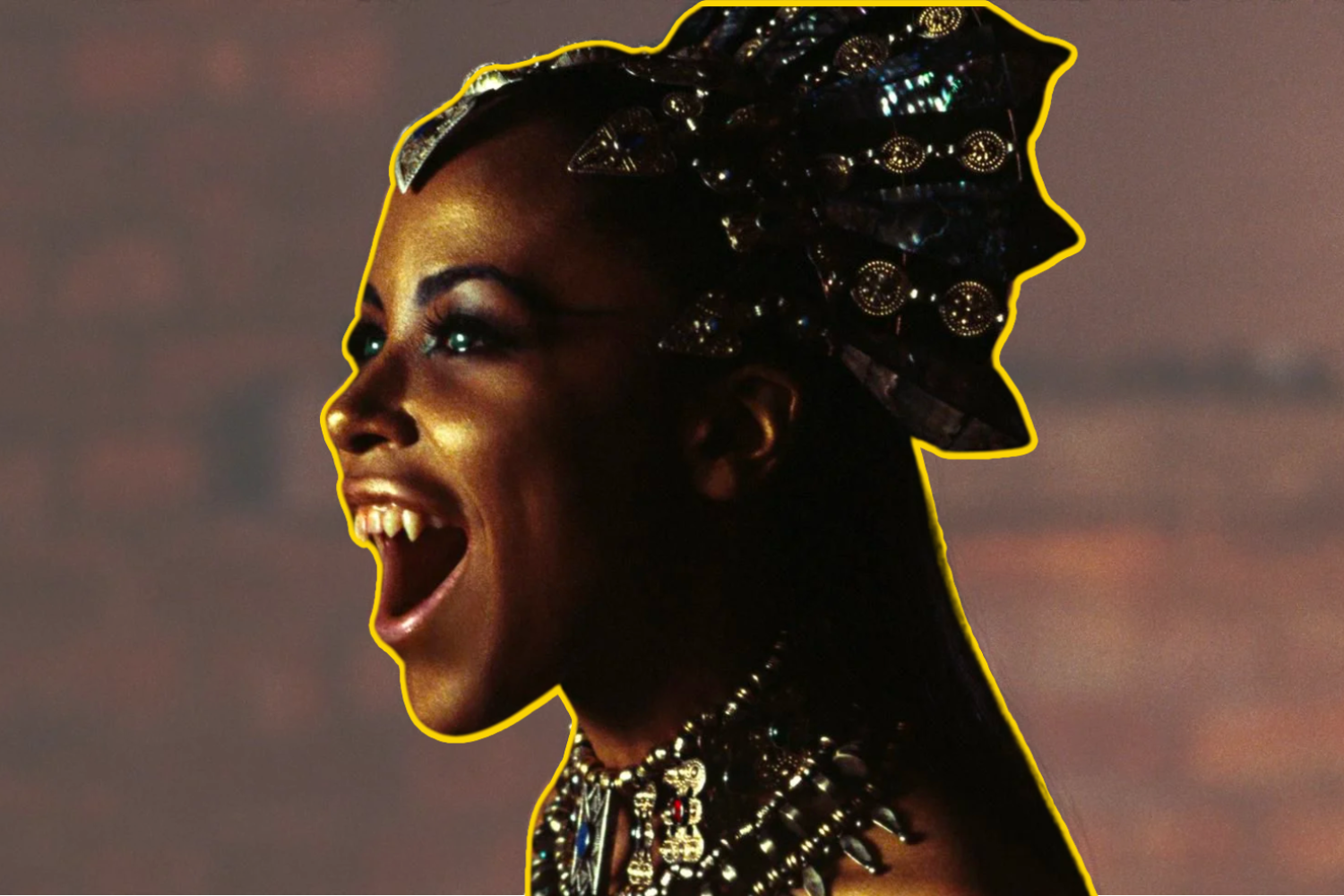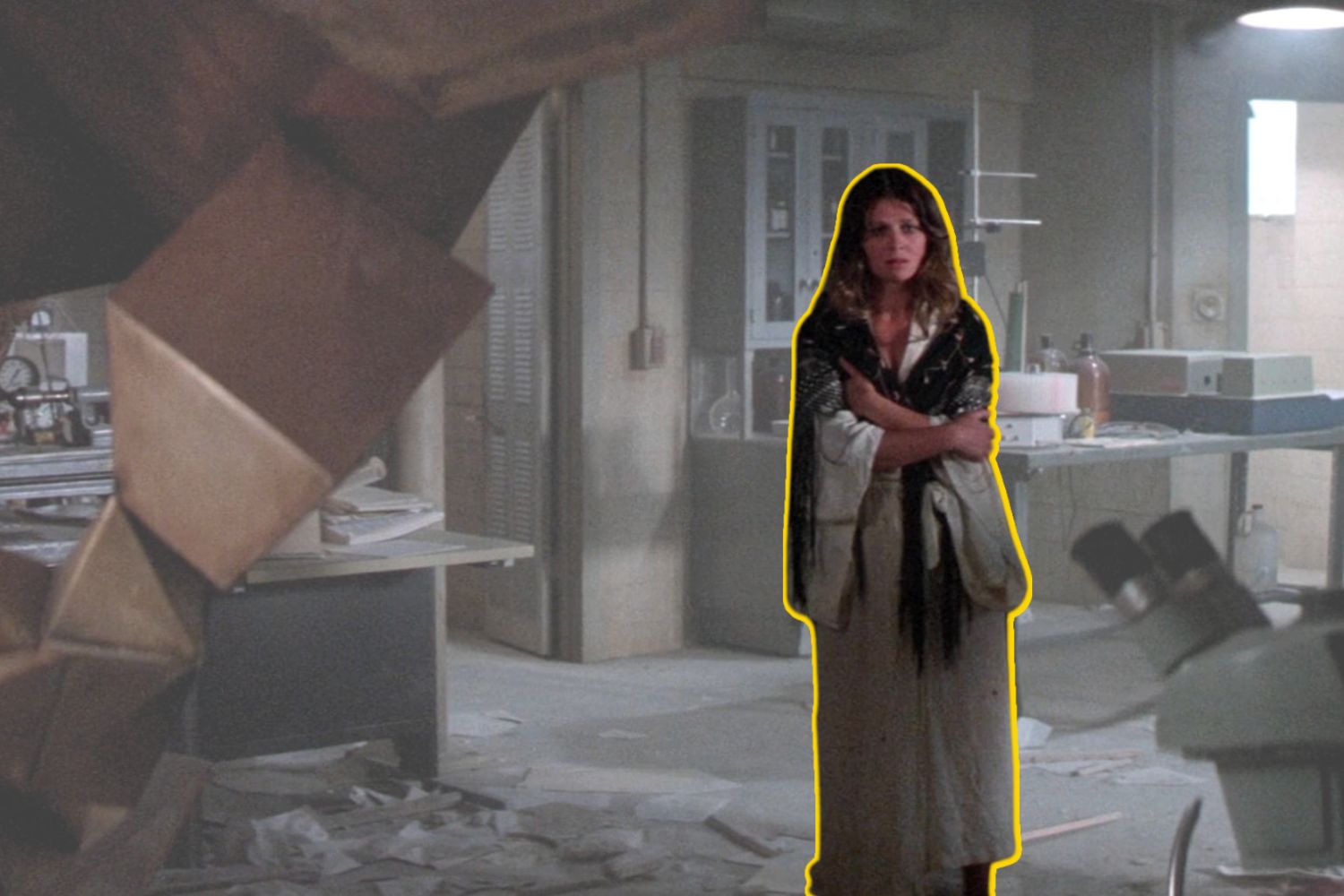Editorials
The Phantom Goes ’80s in ‘Phantom of the Mall’
September 21st, 2022 | By Kayleigh Donaldson

It’s easy to forget just how big a deal the musical adaptation of The Phantom of the Opera was when it premiered on the West End in 1986. Andrew Lloyd-Webber’s romantic drama about a masked musician and his ingenue obsession was a true phenomenon and has retained an immense level of popularity in the ensuing decades. It was the most financially successful entertainment event until The Lion King surpassed it in 2014 and will end its tenure as the longest running show in Broadway history when it closes early next year. Adaptations of Gaston Leroux’s 1910 pulp crime novel were plentiful before Lloyd Webber got his hands on it, from the Lon Chaney silent classic to the cult favorite Phantom of the Paradise. However, they experienced a new surge in prominence after his take became the defining musical of the decade. But a mere year after the musical opened on Broadway, the Phantom went horror in the most ’80s manner possible.
As the title suggests, 1989’s Phantom of the Mall: Eric’s Revenge isn’t exactly aiming for a slavish adherence to the source material. If Leroux’s book goes for timelessness with its themes of not maligning outsiders and perpetuating cycles of abuse, the mall redo is a hyper-specific representation of its era. It’s more ‘80s than you could possibly imagine: shoulder pads, Morgan Fairchild in villain mode, mall culture satire, frilly dresses, critiques of yuppie-era commodification, and, of course, Pauly Shore. Many Phantom takes are defined by their time periods, but this one encapsulates such a particular ‘80s essence. This had to be made in 1989: late-Reagan era, post-Video Nasty, mid-Lloyd Webber frenzy.
The mall of the title is the shiny new addition to a typical American town, one built upon land that included the burned down home of Eric, a local teen and his family who died under mysterious circumstances. Unbeknownst to his friends and grief-stricken girlfriend Melody, Eric now lives in the mall, face scarred beyond recognition and seeking revenge on those who wronged him. Also working on solving the mystery is Melody, alongside a nosey reporter who may prove to be a rival for her affection.
Befitting a story involving death by snake, Phantom of the Mall is extremely silly. It’s very much cut from the same cloth as the likes of Chopping Mall and Death Spa, slasher flicks milking the hell out of a high-concept title but always self-aware enough to add a few jokes. There are moments of ingenuity in there, especially if you know the source material it’s gently inspired by. As a Phantom nerd, it’s fun to see the ways the narrative trademarks have been changed to suit the mullet age.
Eric—with a C, not a K—wears a mask but also has a bro-friendly baseball cap and aforementioned mullet to complete the look. Rather than use a Punjab lasso to curtail his enemies, he roundhouse kicks them, Chuck Norris-style. He doesn’t compose beautiful operas for his muse: he lifts weights with stolen exercise machines. It all feels so deliberate, so obviously mocking what had, by that point in time, permeated the public consciousness and already been the subject of many jokes.
It wouldn’t be an ‘80s film without some evil real estate developers. The era of Greed is Good Reaganomics and vast fetishization of owning expensive things predictably birthed a new kind of villain that offered a surface-level critique of an increasingly toxic system. These well-dressed schemers always talk of bringing new jobs to the area and revitalizing the local economy, using such seemingly utilitarian qualities as an acceptable cover for all manner of crookedness. The malls themselves are a handy stand-in for rampant capitalism engulfing our lives. They’re so easy to love (shopping!) but convenient demonic representations for when things Go Too Far.
For Eric, the mall mission cost him his family, his face, and any semblance of normalcy he could hope to have for his future. His revenge against the developers and the monstrous neon-tinted shopping center atop his old home is easy to root for. Indeed, his plan seems far more understandable than that of Erik in Leroux’s novel (it’s just hard to get the general public to root for someone who kills people because the opera house owners won’t follow his creative demands). Of course, that doesn’t mean that Eric can win, not exactly. It’s still the ‘80s, and the ugly guy can’t get the girl.
This is another Phantom adaptation where our eponymous character is disfigured during a tragic accident that sends him mad, as is the case in the novel. A similar fate befalls the Erics of Phantom of the Paradise and the Hammer Horror adaptation from 1962 (to name but two examples). This inevitably changes the moral core of the story from one of a character’s lifelong struggles with a world that has always hated him to one of revenge from a formerly hot dude.
Eric, like his novel counterpart, wants to keep his love in the “dungeons” of the mall as his companion, but when she refuses, he turns violent and the audience must lose all sympathy for him so that Melody can go off with the still-handsome third wheel (befitting all Phantom adaptations, this one’s version of Raoul is very dull.) He may get his ultimate goal of destruction in the end but Eric’s death, rather than being a moment of tragic regret and understanding, is more akin to that of a knife-wielding maniac with no inner life. This was never a film going for nuance but it is a disappointing simplification of what could have been a more layered take on a familiar figure in horror.
There are many reasons that creatives keep adapting The Phantom of the Opera (a new six-part TV miniseries courtesy of author Anthony Horowitz is currently in development). Much like other classic horror tales in the public domain, there’s an appealing malleability to its setup and central themes. A masked stranger exacting revenge in a unique setting will always be interesting, even in its most knowingly bananas form. It’s a concept that can withstand the changes of any era, including one as heightened as the ‘80s. Phantom of the Mall may not feel as timeless as some other Phantom adaptations but by acutely capturing such a specific moment in social and cinematic time, it reveals why the source material is as good as it is.



